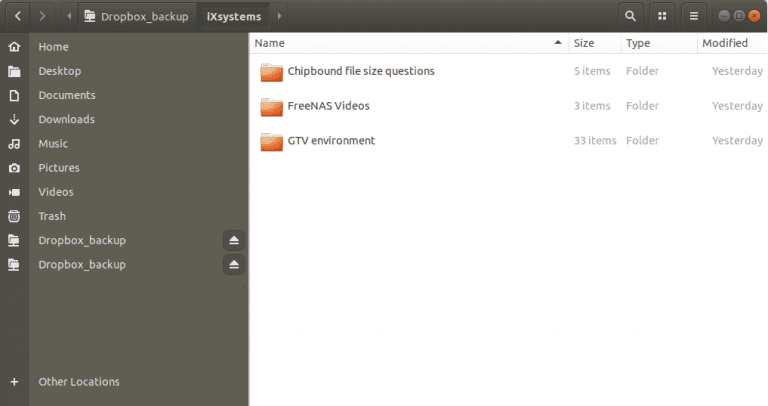


- #Move bitnami redmine to another server install#
- #Move bitnami redmine to another server update#
- #Move bitnami redmine to another server upgrade#
- #Move bitnami redmine to another server full#
- #Move bitnami redmine to another server password#
d 30 -c “cmd /c del “%BackupFolder%” “%RemoteFolder%” /E IF not exist %BackupFolder% (mkdir %BackupFolder%)Ĭ:\bitnami\redmine\mysql\bin\mysqldump -h localhost -u root –password=XXXXX –all-databases » %FullBackupPath%įorfiles -p %BackupFolder% -s -m. Set FullBackupPath=%BackupFolder%\%BackupFile% Set RemoteFolder=\backupservernamehere\backupfolderhere
Correct the batch file if any errors show up. To verify the backup task, run C:\bitnami\tasks\mysqlbackup.bat. and add the following lines to the TOP of the file:. Now, open C:\bitnami\redmine\apps\redmine\conf\nf. From the backup, copy the certificates to: C:\bitnami\redmine\apache2\conf. We need Apache to redirect to https always. Additional configuration (Apache, Tasks, and Email) 11.1. Copy and paste the logo.png and favicon.ico in the images folderġ1. find the line decalring the subFolder variable and enter subFolder = “/redmine”. #Move bitnami redmine to another server install#
Extract the new plugin in C:\bitnami\redmine\apps\redmine\htdocs\pluginsĬALL "C:\bitnami\redmine\scripts\setenv.bat"Ĭd "C:\bitnami\redmine\apps\redmine\htdocs\"īundle install -no-deployment -without development testīundle exec rake redmine:plugins NAME=redmine_agile RAILS_ENV=productionīundle exec rake redmine:plugins NAME=redmine_checklists RAILS_ENV=productionīundle exec rake redmine:plugins NAME=redmine_contacts RAILS_ENV=productionīundle exec rake redmine:plugins NAME=redmine_people RAILS_ENV=productionīundle exec rake redmine:plugins NAME=redmine_contacts_helpdesk RAILS_ENV=production. delete the existing plugins in C:\bitnami\redmine\apps\redmine\htdocs\plugins. Finally, open the Bitnami Service manager and start all services. 
Please download from:īundle exec rake redmine :plugins:migrate RAILS_ENV = production Note: Installation of the abacus theme and customization for your company is preferred.
Copy apache htdocs to C:\bitnami\redmine\apache2\htdocs. Copy the custom themes of the themes folder to C:\bitnami\redmine\apps\redmine\htdocs\public\themes. Copy the contents of the banner htdocs folder to C:\bitnami\redmine\apps\bitnami\banner\htdocs. Copy the contents of the plugins folder to C:\bitnami\redmine\apps\redmine\htdocs\plugins. Copy the contents of the files folder to C:\bitnami\redmine\apps\redmine\htdocs\files. Copy the configuration.yml file to C:\bitnami\redmine\apps\redmine\htdocs\config\configuration.yml. Copy the notes and tasks folders to c:\bitnami. Now go to Instance, Startup/Shutdown and stop and start the service. Now, allow remote connections to the database by going into Instance, Options File, scroll to the bottom, and under General, uncheck the bind-address and click on Apply. #Move bitnami redmine to another server password#
You can find the password in the following file: C:\bitnami\redmine\apps\redmine\htdocs\config\database.yml
#Move bitnami redmine to another server update#
Go to users and update the password for the bitnami user. Run the following SQL Query in order to reset the cached authentication states: FLUSH PRIVILEGES. Restore the bitnami_redmine schema from the previously created backup file. Drop the bitnami_redmine schema completely. For password enter password1 (previously set during installation) Open MySQL Workbench and ufor username enter root. Open the Bitnami Service Manager application as in step 1. Wait for the installation to complete. Uncheck the Deploy to Bitnami Cloud option. We will copy those setting from the existing backup files. Do not setup STMP (Email) at this point. For Login, choose username: admin, Password: password1 – We will change this very soon. Set the target folder to C:\bitnami\redmine. Go to Add and Remove Programs in the Windows Control Panel, and uninstall the current version of Bitnami Redmine. Copy the entire redmine folder to a safe and temporary location. All services must be stopped at this point. Run the manager-windows application again, and stop the MySQL Server. Run the backup and keep the output sql file in your Desktop folder. Select the bitnami_redmine database, Self-Contained File, Single Transaction, and Include Create Schema options. Run MySQL Workbench and connect to the localhost instance. Make note of the current Redmine version running. #Move bitnami redmine to another server full#
Verify that a FULL database backup is available in a remote server. Under Computer > Properties Advanced System Settings > Environment Variables > System Variables: SSL_CERT_FILE set it to a valid cacert.pem. Go to: c:\bitnami\redmine and run the manager-windows application. #Move bitnami redmine to another server upgrade#
This guide covers basic administration tasks for a Windows Bitnami Redmine Installation and Upgrade steps.







 0 kommentar(er)
0 kommentar(er)
